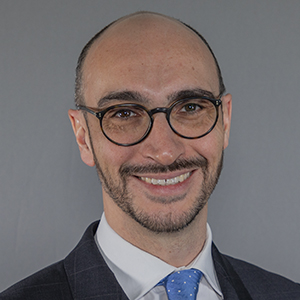January 27, 2023

On January 18, Azerbaijan’s Ministry of Foreign Affairs announced that it had commenced an action against Armenia under the Bern Convention on the Conservation of European Wildlife and Natural Habitats (Bern Convention). This development marks the first known interstate arbitration brought under the Bern Convention, which was signed on September 19, 1979. Azerbaijan argues that Armenia has caused “extensive destruction” of the environment and biodiversity of the area during Armenia’s near 30-year “illegal occupation of internationally recognized territories of Azerbaijan.” The press release states that “Armenia’s widespread deforestation, unsustainable logging, and pollution through significant construction and mining in areas that were protected nature reserves prior to occupation has put over 500 wildlife species at risk in Azerbaijan,” and that when “liberating” the territories in 2020, Azerbaijan was able to collect evidence of “Armenia’s destruction of the environment,” whose activities had caused “severe harm to the area’s natural habitats and species, depleted natural resources and destroyed biodiversity.” The statement references a 2022 UN Environment Programme report which describes “environmental impacts at three levels: i) deforestation and land degradation; ii) suspended sediment pollution in rivers; and iii) chemical pollution of water, soil, and biota [animal and plant life].”
According to its press release, Azerbaijan is seeking an order from the arbitral tribunal for Armenia to cease all ongoing violations of the Bern Convention and to make “full reparation for its environmental destruction.” The Bern Convention was signed in 1979 and entered into force in 1982. The aims of the Bern Convention, as established in Article 1, are “to conserve wild flora and fauna and their natural habitats, especially those species and habitats whose conservation requires the cooperation of several States, and to promote such cooperation.” Additionally, the Bern Convention gives particular emphasis to conserving “endangered and vulnerable species, including endangered and vulnerable migratory species.” The Convention has been signed by 50 countries as well as the European Union.
Taking the Temperature: It is significant that the Bern Convention, despite entering into force in 1982, is not known to have been utilized to resolve an interstate dispute. Disputes are resolved by a three-person arbitration panel (each side picking one arbitrator and those two picking the third), which is tasked with establishing its own rules of procedure. Decisions are by majority vote and final and binding. Given that the panel, once selected, has to draw up procedures without any precedent specific to the Bern Convention before it can begin to address this particular dispute, we do not anticipate a decision in anytime soon. More broadly, two points bear mention. First, much climate-related public discussion and media attention focuses on a few notable agreements and conferences, such as the Paris Agreement and the agreements reached recently at the COP27 conference on climate change and the COP15 biodiversity conference. But other international agreements exist, and it would not be surprising if countries make greater use of those agreements going forward as climate issues become more pressing. Second, climate-related dispute resolution continues to take varied forms. Regulators and NGOs have been increasingly aggressive in asserting climate claims under climate-specific and more general laws and regulations, as we have discussed. We expect the filing of climate-related disputes to continue to accelerate, and companies and their boards can prepare by assessing the state of their climate-related governance and disclosure.

On January 23, 2023, the Chairman of the Commodity Futures Trading Commission (CFTC), Rostin Behnam, announced in his keynote speech at the Commodity Markets Council’s annual conference that the CFTC “can play a role in voluntary [carbon] markets.” This is not the first time that the CFTC has publicly stated that it is considering its role vis a vis regulation of voluntary carbon markets (VCMs) or compliance carbon markets (CCMs), but it is the first time that the CFTC Chair has articulated a clear action plan for regulation. According to Chairman Behnam, carbon markets “must have integrity and adhere to basic market regulatory requirements.” His statements are significant for several reasons.
First, it confirms the CFTC’s authority to “play a role” in VCMs because carbon itself, as well as carbon and other environmental offsets, credits and allowances, generally are considered “commodities” as defined in Section 1a(9) of the Commodity Exchange Act of 1936 (CEA) and as explained in CFTC and Securities and Exchange Commission’s (SEC) guidance. As a “commodity,” transactions involving carbon or carbon offsets on VCMs are subject to CFTC’s anti-fraud and anti-manipulation enforcement jurisdiction.
Second, because VCMs and CCMs are commodities markets, the CFTC not only “can” but is bound to police these markets pursuant to the CEA. In fact, a group of U.S. senators wrote to the CFTC in October 2022 directing the CFTC to take “concrete steps to implement rules governing the carbon market.”
Third, commodities originating in VCMs and CCMs are now also traded as listed futures and options contracts on CFTC-regulated designated contract markets – i.e., commodity exchanges. For example, the CME Group lists futures on California carbon allowances as well as Regional Greenhouse Gas Initiative (RGGI) CO2 allowances, and the ICE and Nodal exchanges list futures on commodities also traded on VCMs and CCMs in the U.S. and globally. Because futures and options on commodities qualify as contracts for future delivery (such as derivatives), the CFTC under the CEA not only has a role, but also has exclusive enforcement authority in these markets. Indeed, Behnam states that in these markets CFTC’s “responsibility is real.”
Taking the Temperature: In light of recent COP27 announcements, as well as the goals of the White House National Climate Task Force, the U.S. government will have to become more actively involved in further development of VCMs and CCMs, and the CFTC will have to play a key role in these efforts, especially if there will be some form of a national cap and trade scheme. The CFTC has already taken steps to define its regulatory role in these markets.
What does it all mean going forward? There are two likely outcomes in the near term: (a) the CFTC’s division of enforcement will become more active in prosecuting fraud and manipulation in commodity or cash VCMs and CCMs (e.g., greenwashing, or fraud in claiming reduction in carbon capture or reduction), as well as in related exchange or OTC-traded derivatives markets; and (b) the CFTC will become more involved in the regulation of these markets in the U.S. in coordination with other regulators and global initiatives (e.g., IOSCO).

Last week, agents from Brazil’s environmental protection agency, the Institute of Environment and Renewable Natural Resources (Ibama), carried out the first significant environmental enforcement activity under the new administration of President Luiz Inacio Lula da Silva (Lula), who assumed office on January 1, 2023. The anti-deforestation raids, which were accompanied by members of the press, took place in the rainforest state of Para within the protected Cachoeira Seca indigenous reserve with the goal of preventing loggers and ranchers from carrying out illegal deforestation and land clearance for agriculture. According to Ibama Environmental Enforcement Coordinator Tatiane Leite, additional raids were carried out in the Amazonian states of Roraima and Acre.
The reactivation of meaningful environmental protection enforcement in Brazil under Ibama and other federal agencies is a clear policy priority for Lula’s new Minister of the Environment, Marina Silva. Under the prior administration of former President Jair Bolsonaro, responsibility for enforcement action responding to illegal deforestation was moved away from Ibama to the Brazilian military and later the Ministry of Justice. Ibama’s effectiveness was also impeded by reductions in federal funding and restrictions preventing Ibama agents from speaking to the press.
As we have reported recently, Lula and his new government have made significant environmental promises, including a commitment to end deforestation in the Amazon by 2030. Marina Silva and the Minister of Finance, Fernando Haddad, spoke at the World Economic Forum in Davos on January 17, 2023 in a session outlining Brazil’s new economic and environmental roadmap. The event was a pitch to international investors, with Haddad stressing the new administration’s commitment to fiscal responsibility while acknowledging the significant challenges posed by Brazil’s high levels of social spending. Silva outlined Brazil’s ambitious targets for climate and biodiversity, restated her commitment to return Brazil to world leadership on environmental protection and also offered to host COP30 in the Amazon. In comments reflecting the COP27 agreement on “Loss and Damage” funding, Silva called for developed countries to make good on existing commitments, stating that “We have good global regulation but the investments are lacking. The $100 billion that was pledged by the developed countries is still not here. We need to have resources for mitigation and adaption.”
Taking the Temperature: Ibama’s recent high-profile enforcement action and the public statements issued by Silva and Haddad are designed to signal to the international community that Lula’s new administration is serious about implementing its ambitious environmental policies. As we have previously described, Brazil stands to be a significant beneficiary of international funding for environmental protection initiatives if it can demonstrate tangible progress on environmental protection initiatives, particularly by reducing deforestation in the Amazon. Major international funding initiatives such as the Amazon Fund depend on Brazil maintaining the confidence of the donor governments. As described in recent editions of Cadwalader Climate, international investors will now be keenly watching for similar positive progress on Brazil’s environmental regulatory agenda and upcoming renewable energy concessions.


On January 10, 2023, Goldman Sachs Asset Management announced that it had closed over $1.6 billion in funding for Horizon Environment & Climate Solutions I (Horizon Climate), the first in an expected series of funds through which Goldman intends to target investments toward “key sustainability trends.” Managed by Goldman’s Sustainable Investing Group, Horizon Climate exceeded its initial fundraising goals and serves as Goldman’s “inaugural direct private markets strategy dedicated to investing in climate and environmental solutions.” The fund is classified under Article 9 of the Sustainable Financial Disclosure Regulation. The fund has already committed almost $1 billion to twelve different “portfolio companies at the forefront of climate and environmental innovation” across North America and Europe. The initial investments include companies manufacturing lithium-ion batteries, sustainable packaging materials, recycled cotton fibers, and businesses seeking to promote agricultural water efficiency and energy efficiency in commercial and industrial buildings.
Overall, Horizon Climate will direct its investment strategy in accordance with the five themes “underpin[ning] Goldman Sach’s approach to climate transition”: (1) clean energy, (2) sustainable transportation, (3) waste and materials, (4) sustainable food and agriculture, and (5) ecosystem services.
Goldman’s Chief Investment Officer for Asset & Wealth Management, Julian Salisbury, said that Horizon Climate “represents the transformative power of private capital to help scale cutting-edge technologies that will make a meaningful impact in the race to net zero.” Ken Pontarelli, head of Sustainable Investing for Private Markets at Goldman Sachs Asset Management, added that “Goldman Sachs has been investing in transformative environmental and climate solutions since 2005,” and “as the imperative to transition to a more sustainable economic growth model gathers pace, we are excited to continue backing leading businesses in this space as they develop and scale the environmental and climate solutions of tomorrow.”
The fund will further Goldman’s 10-year goal of directing $750 billion to sustainable finance activities.
Taking The Temperature: We have kept abreast of periodic announcements by global financial institutions regarding their net-zero plans and approaches to curtailing emissions financing. But in addition to presenting challenges associated with emissions reduction, climate change also presents business opportunities for investors and companies, as evidenced by the proliferation of ESG-focused investment funds such as the Goldman fund. Companies that can capture those investment dollars, or that adapt quickly and strategically to the impact of climate transition, stand to profit. That is not lost on regulators, which also are requiring assessment of and disclosure regarding companies’ management of climate-related risks and opportunities. Also noteworthy is that the fund has been classified as Article 9 under the SFDR. As we have discussed, many large asset managers have announced their intention to downgrade ESG funds totaling tens of billions of dollars from Article 9–the highest sustainability classification under the Sustainable Finance Disclosure Regulation (SFDR)—to the broader, and less restrictive, Article 8 following regulatory guidance. Goldman’s decision to adopt the Article 9 classification runs counter to this trend and presumably reflects a view that its investments can satisfy the requirement to have specific sustainable goals as the objective. Article 8 funds, in contrast, promote Environmental or Social characteristics but do not have them as the overarching objective. Article 9 funds are those that have specific sustainable goals as their objective.



